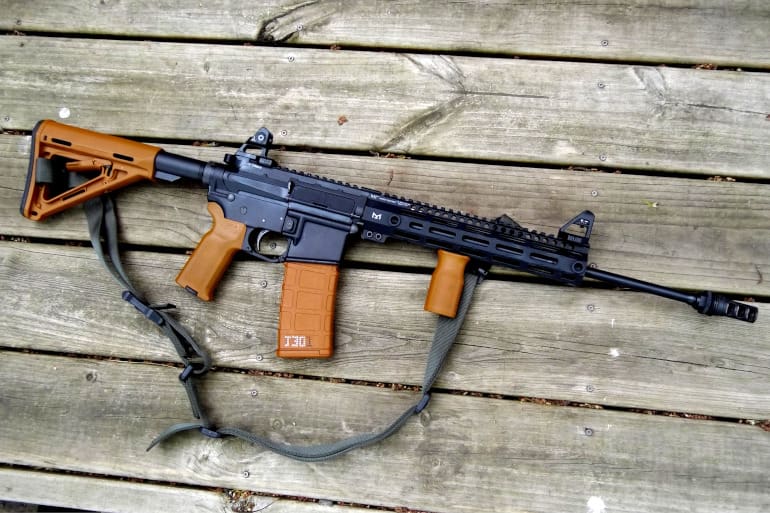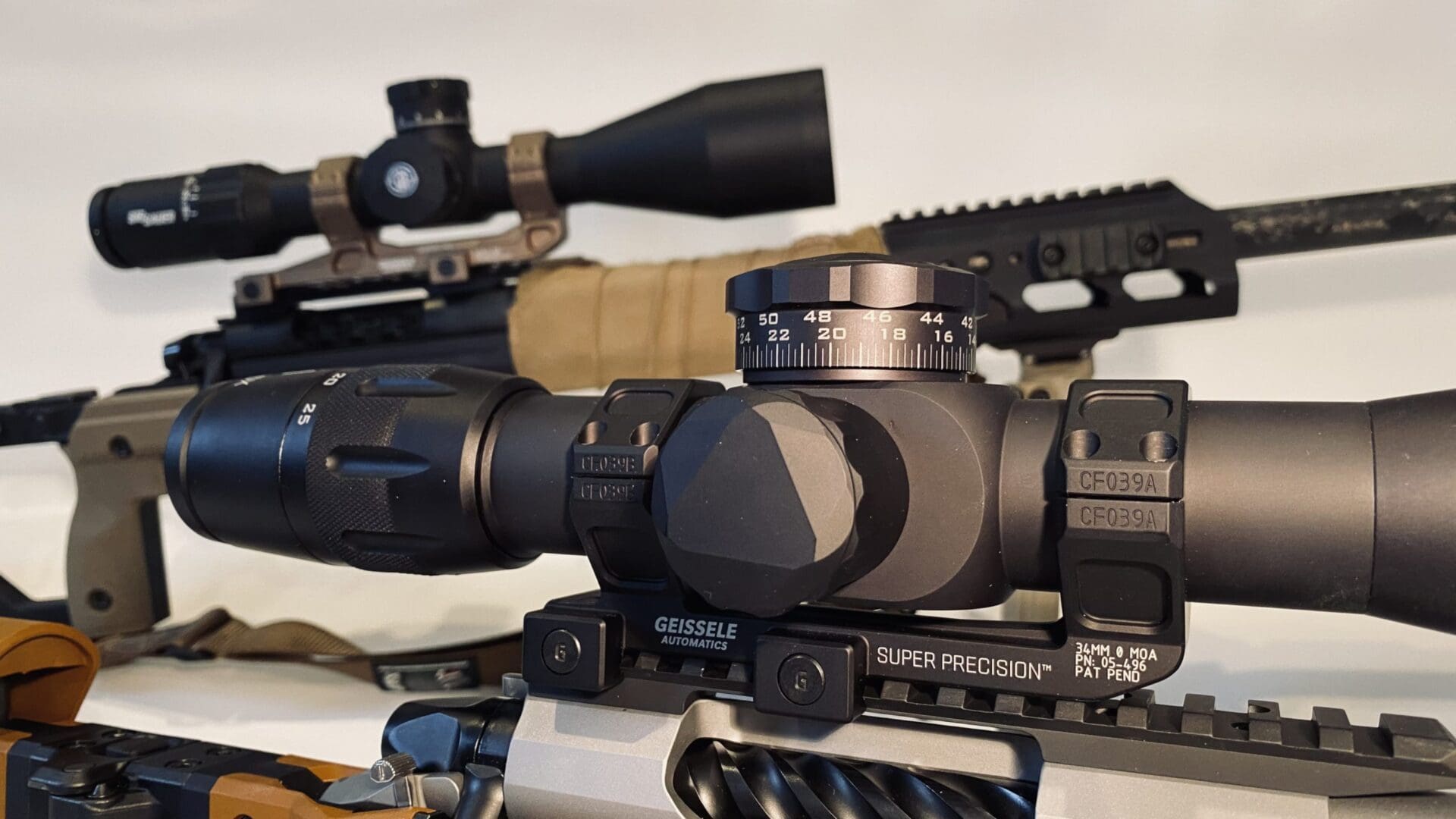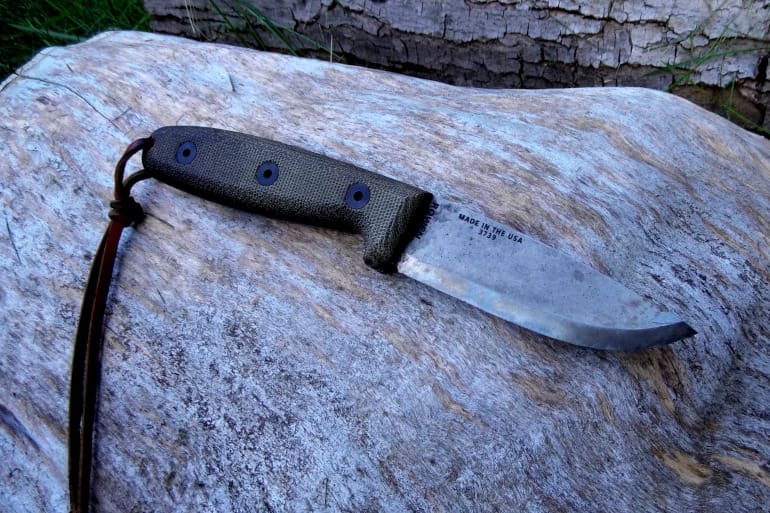
This article is something of a hybrid. It’s a candid review of a couple Faxon Firearms barrels, but it’s also an overview of what to look for when purchasing a barrel for your AR rifle.
We will be covering several topics here as they relate to these Faxon Firearms products to give you an idea of just what you can expect.
Why did I choose to go with Faxon Firearms for this article and not some other barrel maker? Well, for starters, I trust Faxon products and they have yet to fail me or refuse to stand behind their products. I have been using these barrels and other parts in my builds for years now and have a combined total of probably 50,000 rounds of various calibers fired through Faxon barrels. In all those rounds, I have never had an issue to speak of.
Barrel Life, Heat, and Accuracy
When it comes to general barrel life, my poor little 7.5” Gunner profile 300 Blackout barrel here has seen what only can be described as an unholy number of rounds in a short amount of time. I even failed to clean the barrel and the gun it was attached to for over 5,000 rounds of testing over the course of a month while doing an ammo evaluation for a large company.
During the course of that time, the barrel refused to give up and my control groups for accuracy were always the same at 2.5” at 100 yards.
A barrel doesn’t wear out in the way you may expect. I often hear that a barrel begins to lose its accuracy at about 3,000 rounds for rounds like 6.5 Creedmoor and 10,000 rounds for .308 Win and so on.
But what, exactly, is accurate barrel life?
The accurate life of a barrel is subjective and there’s no distinct definition. Some individuals and companies may try to define it, but the definition is often narrow or self-serving.
I find that 3,000 rounds of accurate barrel life for a 6.5 Creedmoor is pathetic. I have a 6.5x55mm Swedish Mauser that I typically fire about 3,000 rounds a year through and I took the top honor for the rifle and caliber at the 2017 National Matches and placed 7th overall in the Vintage match.
How is it that I can get away with shooting a 100+ year old gun with the same bullets, and I’m not restricted by a low barrel life?

The answer lies in pressure and heat. Despite the fact that my prized rifle is so old, the ammunition I use is fairly low pressure and the gun never really gets that hot during firing.
Compared to something like 6.5 Creedmoor, where the pressure is very high in order to get good velocity from such a small case, you’ll see the barrel struggle to keep up at higher round counts due to the erosion that occurs near the throat and rifling lead.
The rifling itself really doesn’t wear out much, but it can slowly begin to lose definition. If you’ve ever seen some gauge an old rifle like an M1 Garand, they look at the throat and muzzle to determine how much erosion has occurred. Cleaning practices at the time took a heavy toll and powders and primers were typically corrosive, which increased the amount of wear on the steel.
As a result of cleaner powders and better modern cleaning practices, most rifle barrels today tend to wear due to the act of firing, however they still ban be damaged with harsh cleaning chemicals.
The weight of a barrel is also important in regulating heat, but not necessarily wear. A thin barrel will get hot faster than a thick one, but a thick barrel stays hot longer. A lightweight barrel like the one pictured on my rifle in this article makes the gun light and handy, but it does get very toasty after a mag or two.
For virtually all end users, there’s no real reason to have a heavy barrel on a carbine. You have probably heard that accuracy goes to hell when a thin barrel gets hot, but this isn’t entirely true. At longer ranges it certainly does matter and it matters for hunting. For man-sized targets inside 300 yards with a carbine, it really doesn’t.
Getting this thin 16” .223 Wylde (a chamber profile that can safely handle most all .223 and 5.56mm loads) Match Series Faxon barrel hot causes group sizes to open up by about 30%. That may sound horrible until you realize that means the gun goes from shooting 1” groups at 100 yards cold to shooting 1.3″ groups.
At 300 yards, that translates to groups of about 5-6” when the gun is hot, which you’ll never really notice in all practicality. If you have a 7 MOA or greater dot sight on your carbine, you’ll probably never notice at all.

A hot, dirty barrel with thousands of rounds on it is often still a great barrel. My 300 Blackout barrel pictured here has shown the same accuracy on day one as it does today. It is the second barrel in that caliber I have used from Faxon and can say that they are both superior to anything else I’ve used in that they are very predictable.
I can count on those barrels to deliver in any combination of cold, hot, clean, and dirty. I wouldn’t consider any Faxon barrel I have to be worn out, despite the round count being exceedingly high. Round count isn’t a true indicator of barrel life or accuracy and I’ll elaborate on that.
Barrel Length, Weight, and Practical Accuracy
The 7.5” 300 Blackout barrel here has shot the same groups from day one. I average about 2.5” at 100 yards, which doesn’t sound especially impressive, but it is when you look at it with a trained eye.
The chase for .000001 MOA groups at 1,500 yards has led people to have a warped idea of what rifle accuracy is. There’s absolutely nothing wrong with your stock AR if it shoots 3” at 100 yards. While not particularly impressive, that’s more than serviceable for most people.
The accuracy of your AR carbine has much more to do with your interface to the gun than the gun itself. Many stock AR rifles have poor triggers and cheap stocks. Most AR (mil-spec) triggers are junk and a lot of furniture, especially some that’s sold on bargain ARs, belongs in the garbage can.
A wiggly stock plus a bad trigger makes for a bad day shooting. I try to make sure that I always have a free-float handguard on my carbines as well as a great trigger as those two things usually make a world of difference.
Running after tiny groups is a goose chase for most people. It takes money to get an AR to shoot like anything approaching a bolt gun, not to mention the knowledge that it takes to make any gun shoot well.
I’m in the process of learning how to shoot modern service rifle having spent the better part of fifteen years shooting rifles like the 1903 Springfield. It isn’t easy to sling up an AR and learn to master the nuances of a semi-auto match gun when you’ve been shot bolt actions for years. All the moving parts have an impact on your groups and, unlike a good 1903, there are lots of them.
The point here is that you’ve probably got a better gun than you realize and going with a heavy barrel won’t help you as much as you think. In fact, I’d say do the opposite and go light and short.
A 16” pencil barrel may not print ¼” groups, but your AR will be much easier to handle, carry and shoot. You really don’t lose anything. Faxon even makes barrels with integrated flash hiders and brakes that are so thin you can just slide your gas block right over them. They are very light and convenient.
What’s more, a short barrel that’s 10-14” isn’t a detriment to overall mechanical accuracy. I wrote a large piece about this concept that ran on TTAG some years ago (you can read it here).
For those who want to save a click, I’ll sum it up by saying that short barrels are no different than longer barrels when it comes to accuracy. The bullets vary in velocity for a given barrel length, which is to be expected. A short, stiff barrel is often better than a long, thin one in accuracy, but it lacks the projectile speed of a longer tube. There are really no differences for most shooters at most practical ranges.

The short, stiff Faxon 300 Blackout barrel here has virtually no flex during firing, meaning that, due to being stout and rigid, it’s able to maintain accuracy over longer strings of fire while besting longer barrels with some flex.
Don’t think that I’m contradicting myself here after just telling you to go with a thin barrel. The 300 Blackout barrel I have is thin, but it’s short, thus making it stiffer in real terms. How much do you lose going from 16” to 7.5” in 300 Blackout? Probably about 100-200fps in supersonic and nothing in subsonic. There is no practical difference.
You lose more in .223/5.56, but that’s to be expected since that round wasn’t designed with micro barrels in mind. I consider 14.5-16” to be optimum for .223/5.56 since it is your best balance of length to speed with most ammo.
Takeaways
Just about every topic covered in this article would make for ten more detailed articles on the subject. This really just scratches the surface as far. The points you should consider for your own barrel are up to you, but you should make note of the facts and realistic end use.
A short, light barrel isn’t inaccurate nor is a heavy, long barrel always more accurate. If you go Faxon like I have, you’ll get the best of all worlds in respect to weight, accuracy, and product life. While some come close, I have yet to find barrels that are as light and as accurate which is why I recommend them if you’re looking for a replacement barrel or one for a new build.
There are a lot of myths and truisms out there that shooters love to spout when the topic of accuracy comes up (which it usually does). Velocity, accuracy, and barrel life are all subjective depending on how you intend to use your rifle.
Understand that nothing is wrong with your AR carbine if it’s not putting ten shots into .03” at 300 yards. While that would be nice, for most shooters, it’s just not something to concern yourself with so long as your gun is functioning correctly and is easy to handle.







